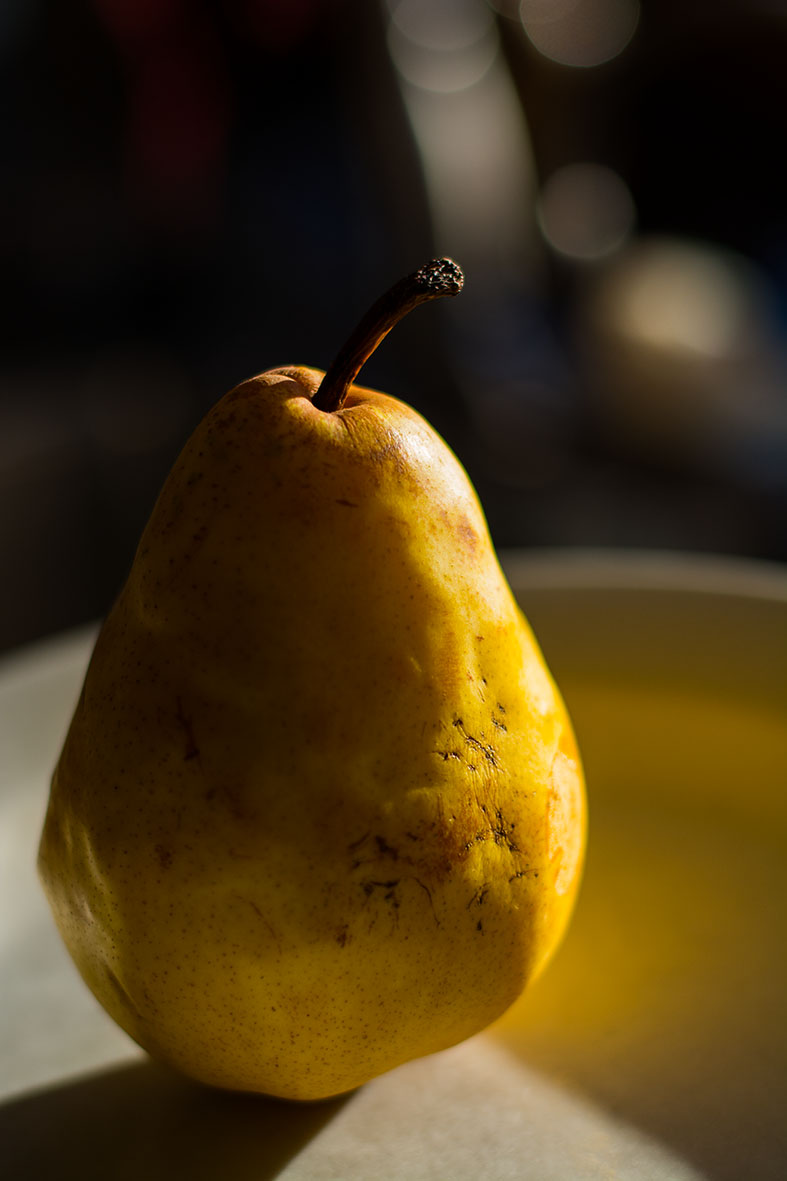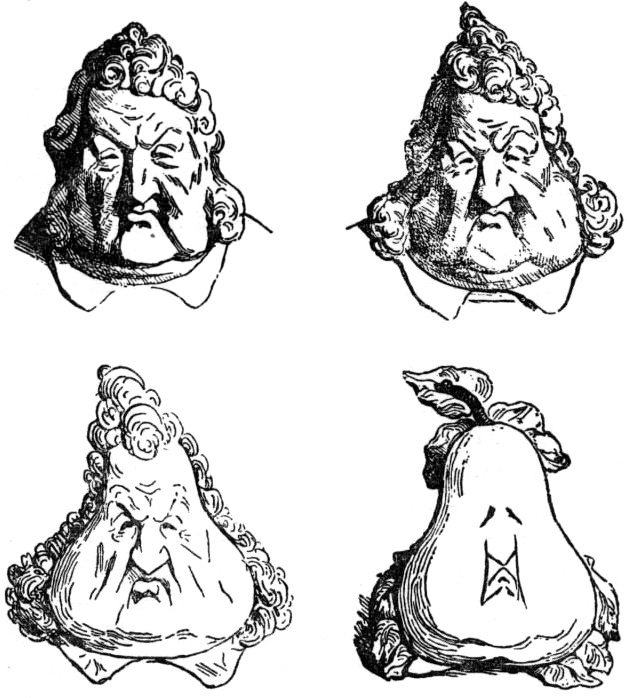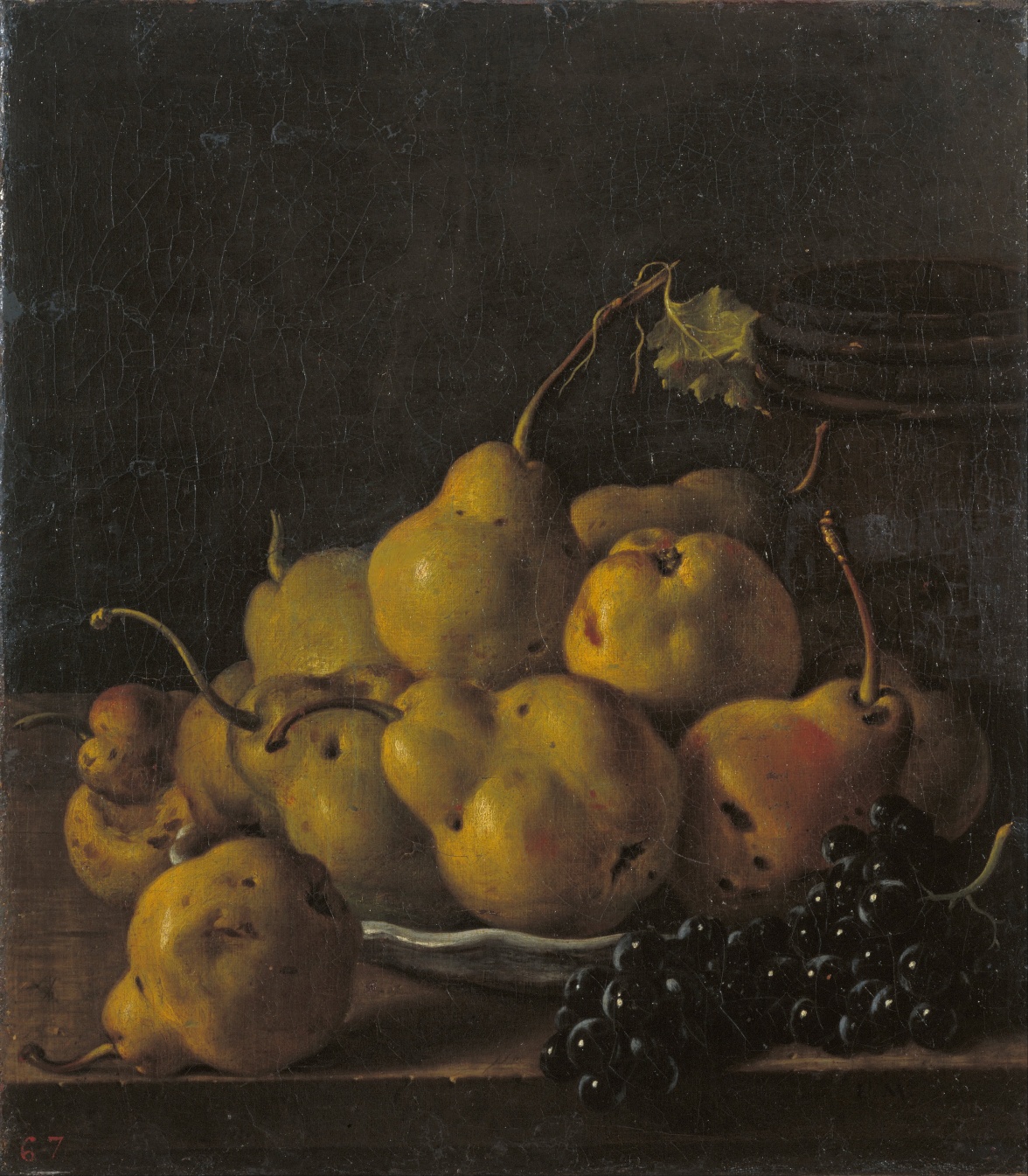
The soft, beguiling fragrance permeates the air, rising above the aroma of the Jonagolds and the Galas, even over the sweet perfume of the Golden Delicious apples piled in baskets, resembling yellow baseballs. The knobby Bartlett pears (Pyrus communis), also known as the Williams pear, still slightly green but with a small and promising pink blush, crowd each other in the flat rattan baskets, the price 99¢.
I grab one of the more “embarrassed” pears and, holding it up to my nose (but not touching it, no), inhale the aroma. Yes, the pear will be ready for its duty in a cake within a few days. Although my parents used to can the Bartletts that grew on a tree looming outside our dining room window when I was a child, I never have done so.
But for a moment, as I plopped three more pears into a plastic bag and laid the bag gently in the grocery cart, I started thinking about the need in the past to preserve pears quickly once they started ripening. Yes, eating fresh is a joy, but the reality is that fresh only lasts for a short window of time. And in the days before refrigeration, the presence of root cellars notwithstanding, preserving pears took some ingenuity. “Winter pears may be laid between the folds of an old clean blanket, on a shelf, in a dry cellar,” so said Miss Corson’s Practical American Cookery and Household Management (1885).

Pears likely originated in China, from where travelers and possibly birds and other animals took seeds to Europe. Most European languages contain a Celtic-based word for “pear,” suggesting a fairly ancient pedigree, according to French-Swiss botanist Alfonse de Candolle.
Apicius’s De Re Coquinaria contains one of the earliest written recipes for pears and other similar fruits:
To preserve fresh figs, apples, plums, pears and cherries
Select them all very carefully with the stems on and place them in honey so they do not touch each other.
The honey – or similar sugar syrup – worked to prevent certain molds and bacteria from thriving during the preservation process, thus equalizing the osmotic pressure of the fruit in the solution.
Much later, Miss Corson’s Practical American Cookery and Household Management (1885) suggests the following method, similar in nature to that of Apicius:
|
PRESERVED PEARS. |
Choose firm acid pears for preserving; if the fruit is small, preserve it whole; if large, cut it in halves or quarters; peel the pears with a silver fruit-knife, dropping them into cold water as fast as they are peeled, to prevent discoloration; when the fruit is all prepared, weigh it, and allow an equal quantity of sugar; put the fruit over the fire in sufficient cold water to entirely cover it, and heat and gently boil it until it is tender enough to yield to a slight pressure of the fingers; meantime put the sugar into the preserving-kettle, adding to each pound a pint of cold water, and to every five or six pounds the thinly pared yellow rind and juice of two lemons, and two ounces of green ginger-root scalded and scraped; boil the sirup, and remove all scum as it rises; when the pears are boiled, as directed above, put them into the sirup, and boil them until they look clear; when the pears are thoroughly penetrated with the sirup, remove the preserving-kettle from the fire, cool the preserves in the sirup, and then put them up as already directed.
When I think of pears, I think of that tree in my yard, true, but I must confess that in my mind, at least nowadays, pears and France intertwine very closely, because pears were especially important in France, a symbol ripe for caricature, among other things.

Drying pears, as people in the Touraine region of France have done for centuries, was another option. Poires tapées provided a form of dried fruit not unlike dried plums (prunes), added to stews and meat dishes, recalling the use of fruit and meat common in Arab cooking.
Alcoholic beverages, such as perry and Poire William eau-de-vie, offered yet another method for preservation of a windfall.
Whatever, however, the pears you see in your supermarket are there because of a long history, of orchards and survival and preservation. That they are “fresh” tells us more about what we desire than what reality is. The reality is this: the freshness never lasted more than a few weeks. Or days. Don’t be deluded.

© 2013 C. Bertelsen
Pear pie IS good, Nancy. What’s in yours?
I love pears. Dried pears are wonderful. My best friend makes a great pear pie for Thanksgiving. he and I love it and eat because everyone else would rather have apples. But pear pie is Thanksgiving for me.
See http://commons.wikimedia.org/wiki/File:Philipon_Metamorphose_Louis-Philippe_en_poire.jpg – he actually gave Daumier the idea.
Thanks for sharing, ambradambra. Very nice post, loved the idea of the candle.
Haha, Le Poire! But weren’t the caricatures done by Daumier? I love your take on the need to preserve pears. They seem to go from perfectly ripe to rotten in about 10 seconds! Thanks for this wonderful post!
Pears are gorgeous, and when ready to eat, one of the most satisfying of fruits. I did some research a few months ago for a post I did on pears and discovered some fascinating information about ‘street pear sellers’ in my hometown of Trieste, Italy that my mother had related to me. You might enjoy: http://ambradambra.wordpress.com/2013/05/30/not-going-pear-shaped/